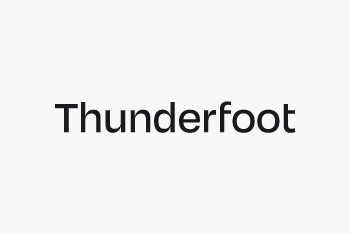Regular publishing is a complex endeavor that requires balancing many different priorities — here’s a high-level breakdown of our typical editorial pipeline, and why it works.
One of our main goals as an agency is to be, in essence, a medium through which our clients can get their ideas out of their heads and onto the page. Obviously this requires creativity and a lot of listening. Fundamentally, it also requires a collaborative system that transforms ideas into actual deliverables, published on-time and on-brand. This system is our editorial workflow.
Our workflow works because it maximizes visibility and client input while adhering to the guiding principles of client voice and publishing cadence. It also minimizes the time and energy that the client must spend actively maintaining their company blog. Writing a blog post is not that hard. Managing a blog — and all other aspects of marketing communication — on behalf of a client requires a process that is both structured enough to ensure a steady output of work but flexible enough to allow rich collaboration.
Priorities
When creating an editorial workflow, we pursue five main priorities:
- Visibility: our clients can check in on the status of a particular article or project at any moment.
- Time / Mental Load: we want to minimize the time and attention that it takes team members and especially in-house subject matter experts (SMEs) to participate in the editorial process.
- Input: we want to maximize the number and the depth of ideas that our clients share with us.
- Cadence: we need to ensure that everything gets published on time.
- Client Voice: our client’s team members must be 100% happy with how our work fits their voice.
Let’s break down these objectives and how our editorial workflow helps us achieve them.
Visibility
We use a popular task management platform called Trello to manage our editorial workflows. Trello allows you to create and manage movable cards (roughly corresponding to a particular project) that live in columns (roughly corresponding to project status).
 At L&T, every deliverable — article, webpage, white paper, infographic, etc. — has a corresponding card in Trello. Every stage of the editorial process (from ideation to publication) has a corresponding column. Each of our clients has its own private, custom Trello board that hosts the workflow.
At L&T, every deliverable — article, webpage, white paper, infographic, etc. — has a corresponding card in Trello. Every stage of the editorial process (from ideation to publication) has a corresponding column. Each of our clients has its own private, custom Trello board that hosts the workflow.
Thus, they can log in to Trello at any time and see their full content calendar and the status of every project laid out for them. Meanwhile, as we create all our written work in Google Docs, this facilitates a fully transparent (and collaborative) review and editing process.
Time and Mental Load
To minimize the amount of input that our clients are asked to contribute, we focus their time and attention on tasks that only they can undertake, such as guiding editorial voice and approving articles. Our editorial team takes on all other functions, thus maximizing the value of our client’s input.
To streamline the workflow, we clearly define specific moments in the editorial process where we need the client’s input. For example, most client pipelines have a ‘Content for Review’ column. Whoever is responsible for approvals is subscribed to this column, so when we put an article there, they are notified that we need their input. This means that they can relax and step back from the minutiae of the content creation process, knowing that they’ll be notified immediately when a piece of work is ready for their approval.
Input
Most of the ideas and article topics we explore come from interviews with our clients’ SMEs or our weekly editorial calls. However, we know that our clients appreciate the ability to express themselves, share ideas, and recommend articles on their own time as well.
To achieve this, we have a Trello column designated for article ideas — we and our clients both contribute to it, with our clients approving ideas and thus pushing them forward in the editorial process. Thus, we maintain a space in each of our clients’ pipelines where all parties can share ideas freely and asynchronously.
 Cadence
Cadence
We build publications for our clients, and publications release work according to a regular cadence. Achieving this is non-trivial, because it requires us to consistently bring together the resources and the cast of characters necessary to publish, say, three times per week.
Trello helps with this too: every card has a due date — with Trello providing email updates as the deadline approaches — and we use a “powerup” that lets you switch to a calendar view, with deliverables arranged by their due dates.
Nothing substitutes proper time management and planning on our part, but building our pipeline in a tool that has a built-in scheduling function makes the process intuitive and allows for seamless communication between different people with different skill sets: writers, editors, designers, web producers, and account managers.
 Client Voice
Client Voice
As mentioned earlier, all of our pipelines include a stage during which our client signs off on a deliverable, at which point we publish it. However, we allow for several rounds of edits and hold to a 100% satisfaction guarantee — this forces us to meaningfully synthesize our client’s vision, voice, and message.
Creating an effective publishing strategy for a client is, in part, pedagogical: we need to learn our client’s voice and ensure that every piece of content remains true to their brand. Holding ourselves to this standard provides the true north that incentives us to understand the people we represent.

